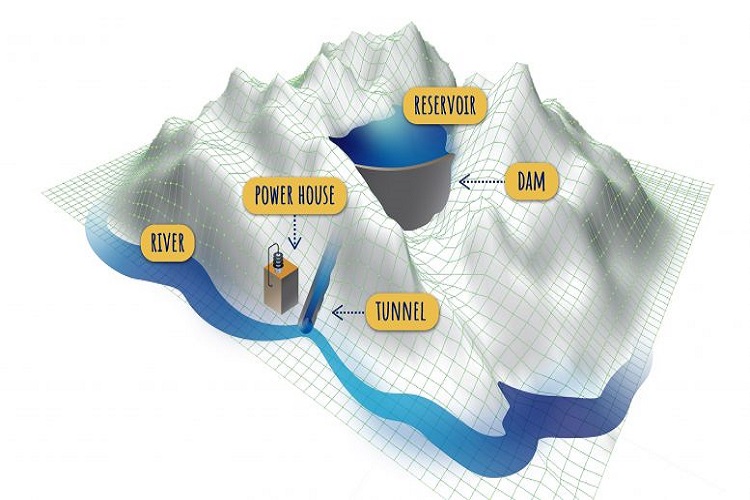SPHS: A sustainable solution for storing renewable energy

Researchers of International Institute for Applied Systems Analysis (IIASA) have done a new study on affordable storage of renewable energy. It shows that seasonal pumped hydropower storage (SPHS) could be an economical and sustainable solution for storing renewable energy and water on an annual scale. Although the SPHS technology was established previously, it has not been used often.
The study was reported in the Nature Communications journal, and shows that when compared to other fully developed storage solutions, like natural gas, there is substantial potential for SPHS to offer highly competitive energy storage costs. This could fill a desperately needed gap to promote the switch to renewable energy.
“The energy sectors of most countries are undergoing a transition to renewable energy sources, particularly wind and solar generation,” says Julian Hunt, an IIASA postdoc and the lead author of the study.
This study is the first to offer a universal, high-resolution analysis of the costs and prospects for SPHS technology. As part of the analysis, the researchers evaluated the theoretical worldwide potential to store water and energy seasonally with SPHS, with a focus on locations with the lowest cost and highest potential. In addition, the researchers analyzed various scenarios in which the storage of water and energy with SPHS could be a feasible alternative.
The study involved topographical, hydrology, and river network data, estimation of infrastructure cost, and optimization of project design, to determine technically viable candidate locations.
The research reveals that the cost of water storage using SPHS plants range from 0.007 to 0.2 US$/m3, costs for long-term storage of energy range from 1.8 to 50 US$/MWh, and costs for short-term storage of energy range from 370 to 600 US$/KW of installed power generation capacity, taking tunnel, dam, generator, turbine, land, and excavation costs into account.
The estimated global energy storage potential is below a cost of 50 $/MWh is 17.3 PWh. This value is roughly 79% of the global electricity consumption in 2017.
The team discovered that there is considerable potential for SPHS across the globe, specifically in the lower part of the Himalayas, Rocky Mountains, Alps, Andes, northern part of the Middle East, Brazilian Highlands, Ethiopian Highlands, East Asia, Central America, Papua New Guinea, the Sayan, Yablonoi and Stanovoy mountain ranges in Russia, and various other locations with smaller potential.
Study lead author and Postdoc, IIASA, Julian Hunt says, “These sources are intermittent and have seasonal variations, so they need storage alternatives to guarantee that the demand can be met at any time. The alternative for long-term energy storage that is usually considered to resolve seasonal variations in electricity generation is hydrogen, which is not yet economically competitive.